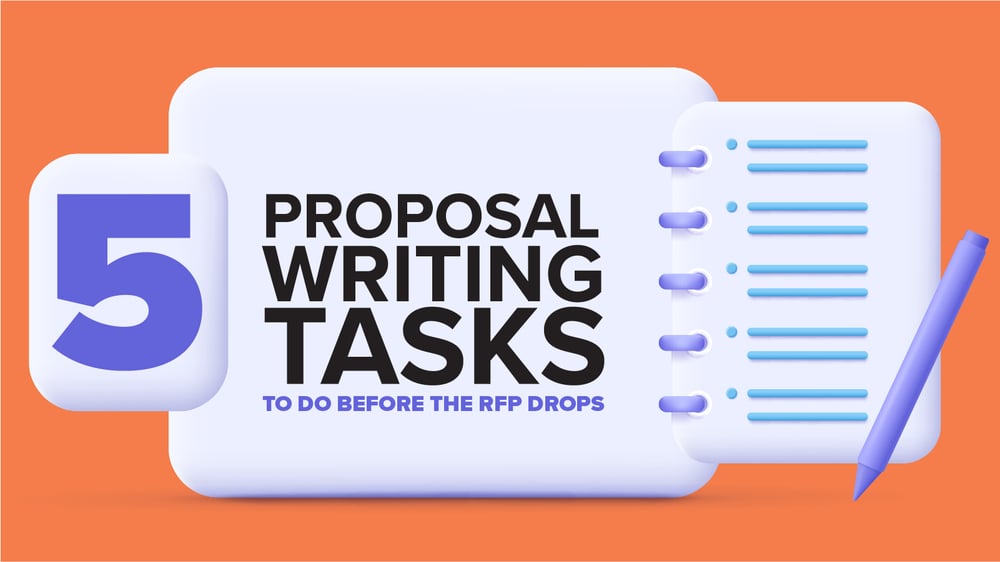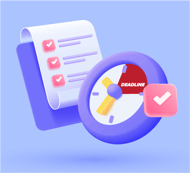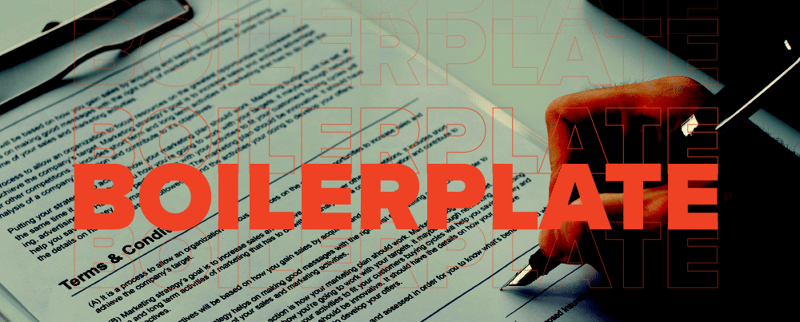
In the deadline-driven and highly competitive world of proposal development, effective time management is critical.
RFP response deadlines are becoming increasingly shorter. Once the RFP is released, the clock starts ticking, and there is no turning back.  After working in the proposal industry for over 25 years, I have observed that offerors are remarkably inconsistent and fragmented in their approach to using time to begin writing prior to the release of the final RFP.
After working in the proposal industry for over 25 years, I have observed that offerors are remarkably inconsistent and fragmented in their approach to using time to begin writing prior to the release of the final RFP.
Some choose to put off writing completely until the final RFP hits. Others hold solutioning sessions where there is no outline, no template, and very little is documented—resulting in minimal progress. Companies spin their wheels and burn their time without putting much on paper.
To make the most of the time available before an RFP hits, a targeted approach is necessary. This article covers five writing tasks to do before the RFP drops:

1. Construct and Begin to Populate an Initial Template
Even without a final RFP, we can use the best information available to start building our template, recognizing there may be changes needed later based on the final RFP. ![]()
Information to use as a starting point might include major elements of the statement of work (SOW) and knowledge gathered from the Capture Team or Subject Matter Experts (SMEs). In addition, we can base our template on the previous RFP (for a re-compete) and on Government issued pre-RFP documents, such as a Request for Information (RFI), Sources Sought Notice, or draft RFP.
Building a template is essential because it provides a skeleton for content. Using this skeleton, we can begin developing content in bullet form to answer questions such as:
- What will we do?
- How will we do it?
- Who will do it?
- What is innovative about our approach?
- When and where have we done it successfully before?
2. Start on Resumes
Too often I hear “there’s no use working on resumes until personnel are selected.”![]()
And too often, I have been involved in mad scrambles to get resumes completed before the proposal is due, with 11th-hour requests to change the resume format. Stressful indeed, and all the more frustrating given the weeks before the RFP release when we could have made substantial progress.
How do we make progress on resumes when personnel have not yet been selected? Get creative! Engage SMEs early to identify likely key personnel. Develop notional, best personnel attributes for each position based on information such as known customer hot buttons and then build a prototype with the ideal candidate attributes front and center. Having a prototype, with buy-in from the proposal leadership team, will speed up the writing process once personnel are selected and reduce the risk of last-minute format changes.
Fortunately, sometimes personnel are decided on well in advance of an RFP release, especially for a recompete. Recently, I had the great fortune of supporting a winning proposal in which the client set aside time before the RFP to thoroughly update incumbent resumes, saving valuable time once the final RFP was released.
3. Start on Past Performance
Similar to resumes, we can begin building our Past Performance reference prototype early, focusing on relevancy to the anticipated SOW and success stories on prior projects.![]()
Begin by asking decision makers for a short list of potential Past Performance references. If previous writeups are available, work with the appropriate project team member(s) to verify accuracy and make any necessary updates. If starting from scratch, develop a template and data call, focusing on requests for data, including metrics and proof points to show relevancy and successful performance.
As you write your first draft for Past Performance, do not be overly concerned with page count. Remember, even if there are page limits on the Past Performance reference in the final RFP, data gathered for Past Performance can be a gold mine for proof points in other parts of the proposal. Furthermore, many RFPs require corporate experience sections separately from past performance. This pre-RFP period is an excellent time to gather and update corporate information, statistics, recognition, and achievements that can be incorporated into multiple sections of the proposal.
4. Gather Boilerplate and Identify Gaps
Start the process of gathering, updating, and beginning to tailor existing relevant boilerplate. As you do so, you will naturally notice gaps where existing boilerplate is unavailable.![]()
In these instances, put in place the resources to craft new, original content where needed. Recently, I supported a winning proposal for a well-organized client that did an excellent job of gathering boilerplate and identifying gaps early. A draft RFP was issued requiring a draft Quality Assurance Surveillance Plan (QASP) as part of the proposal.
The client was the incumbent and was surprised to see the QASP reference as the current contract did not require a QASP. Fortunately, resources were immediately assigned to start developing the QASP before the release of the final RFP. The upfront work paid dividends when the final RFP included the same QASP requirement.

5. Develop Win Themes and an Executive Summary
Waiting until after the RFP drops to develop win themes and write the first draft of the Executive Summary puts us at a clear disadvantage as the clock continues to tick away toward a live due date.
Instead, develop the first draft of the Executive Summary early in the process. Work with decision-makers to begin documenting themes, discriminators, features, and benefits early to help guide the rest of the proposal. Then, continue to iteratively improve the Executive Summary and add detail to the win themes as the RFP is released, information is gathered, and solutions are matured.
Conclusion
In today’s deadline-driven proposal environment, organizing and planning what to begin writing before the final RFP drops allows us to work smarter, not harder, as we make meaningful progress and position the proposal for success.
By starting early on these writing tasks, we can use the time after the RFP release to build on what we have started, enhancing our ability to develop a compliant and compelling proposal. The result: greater productivity and efficiency, reduced false starts, less stress, and a greater win probability.








